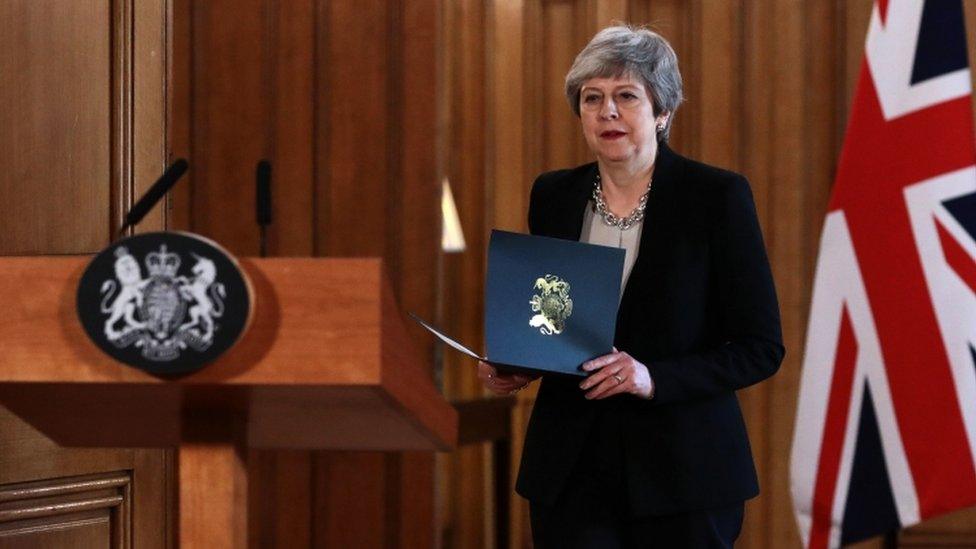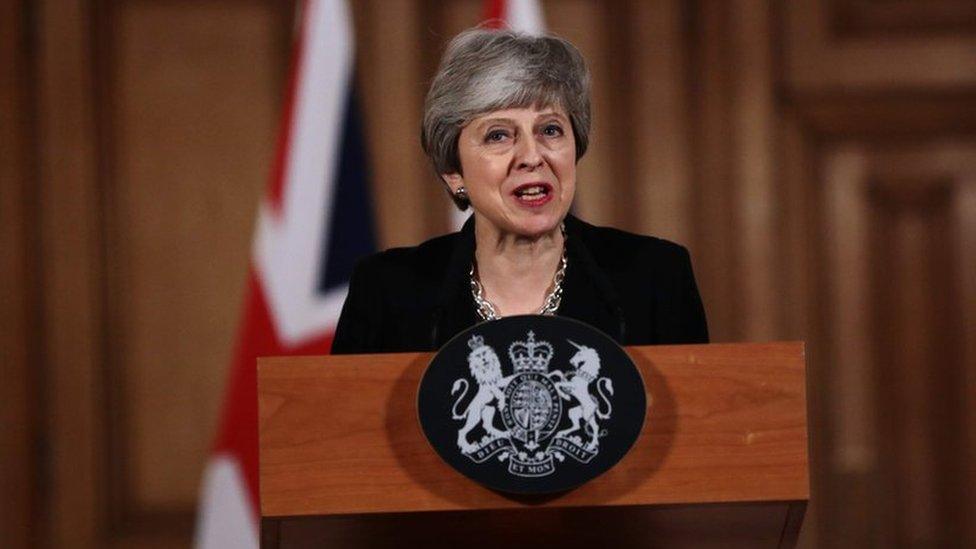Brexit: Theresa May chooses a deal over party unity
- Published

She was for budging. Today, the prime minister made her priority leaving the EU with a deal, rather than the happy contentment of the Brexiteers in the Tory party.
For so long, Theresa May has been derided by her rivals, inside and outside, for cleaving to the idea that she can get the country and her party through this process intact.
But after her deal was defeated at the hands of Eurosceptics, in the words of one cabinet minister in the room during that marathon session today, she tried delivering Brexit with Tory votes - Tory Brexiteers said "No". Now she's going to try to deliver Brexit with Labour votes. In a way, it is as simple as that.
Political smarts?
That could mean, three cabinet sources suggest, accepting many of Labour's demands for the deal - those six tests, which it has often, frankly, been assumed were designed to be impossible to meet. Irony would ring out if in the end they were all delivered because of the desperation of the Tory prime minister.
One cabinet minister told me the offer to Labour is, "You want soft Brexit - here it is. You help shape it." Potentially, there are political smarts here - challenging Jeremy Corbyn to decide, finally, whether he leads a party that really is up for pushing through our departure from the EU, or a group that wants to fight it until its last breath. Either choice for him is complex given that his party is divided too.
And ministers tonight don't hold out huge hope of a genuinely productive cross-party process. Frankly, they don't know if they can trust Mr Corbyn enough to come to a genuine agreement that Labour would stick to.
Of course, for any opposition party the temptation might be always to play for political advantage. We know by now that is not necessarily exactly the same as the best interests of you and me.
'Whole Tate Modern'
And whether it's Theresa May or Jeremy Corbyn who sinks this still hypothetical process, it will be Parliament that takes the reins. That could, in turn, challenge reluctant Brexiteers to confront the reality that the prime minister's deal could be the best version of Brexit they are ever going to get - maybe, just maybe, swinging support for Theresa May's withdrawal agreement in the end. Stranger things have happened.
But the prime minister has taken a huge risk with her party, and an implosion may stop any of this process in its tracks. There's what's described as "genuine fury" among Brexiteer ranks and ministers that the PM has made this choice. One senior Tory said she is "making an art form of bad misjudgements - this is not just a Rubens or a Van Gogh, it's the whole Tate Modern".
As ever, there is a very big gamble that has just become a real risk. The prime minister can reach out for support from the other parties - and compromise to get it - and ultimately maybe get her deal through. But if and when she is able to do that, her party may be so split and so fractious that she may not be able to govern or do anything, ever again.
One question
If she were actually to strike some form of weird pact with the Labour Party over Brexit how long could it reasonably last? And how could it function and deliver a sustainable agreement when she has already said that she is leaving and another leader will soon be along to take charge of the second phase of Brexit?
Perhaps right now we can only answer one question that for so long Theresa May has avoided answering. When it came to it, would she choose party unity or leaving the EU WITH a deal? To the irritation of many, but the relief of others, she's chosen trying to get it done with a deal.
- Published2 April 2019
